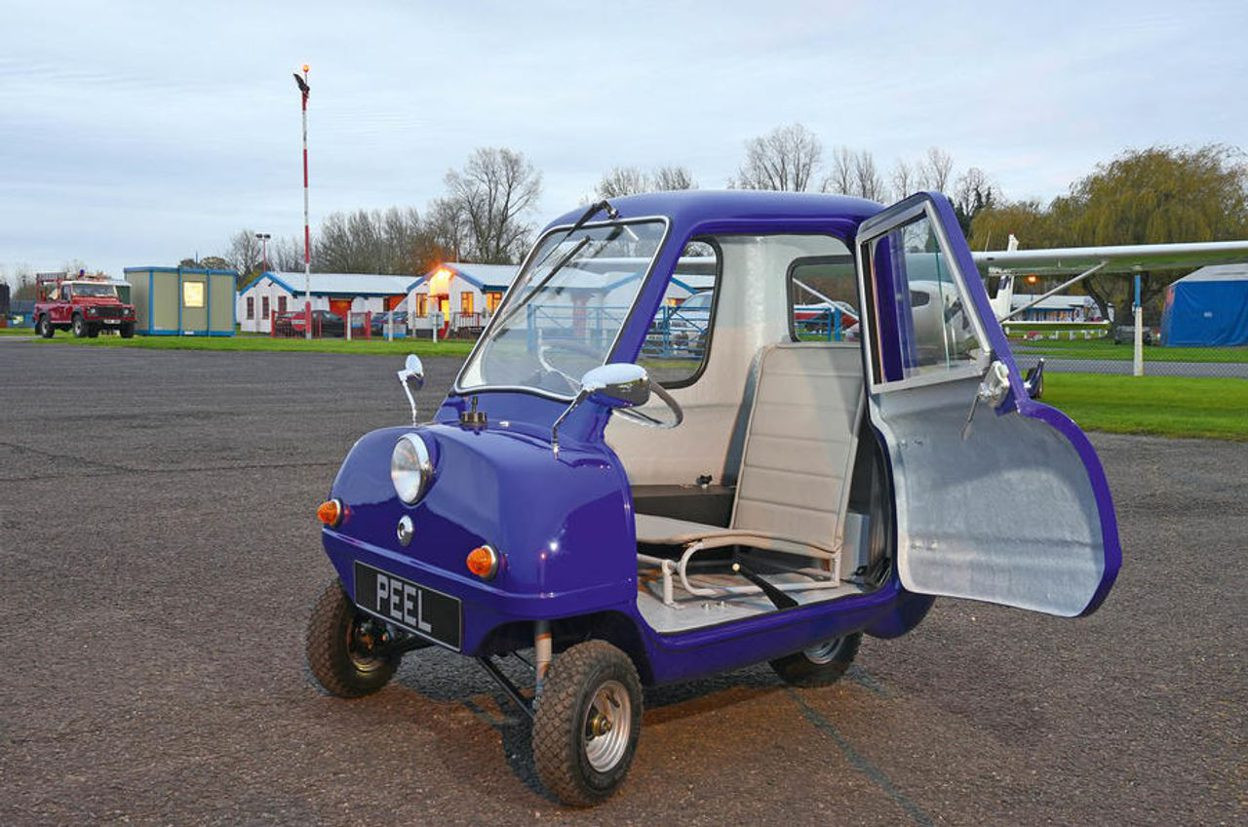The Peel P50 holds the Guinness World Record for Smallest Production Car and stands at just 140cm (55in) tall while weighing just 59kg (130lb). Cute.
DISCOVER SBX CARS: The global premium car auction platform powered by Supercar Blondie
The P50 was revived in 2010 with an EV version coming into production the following year.
The classic cars can fetch a pretty high price these days – in 2016 a P50 was sold for a staggering $176,000 at auction.
But they were originally a bit of a bargain, with a price tag of just under $250 – around $5,655 in today’s money.
The car’s unique selling point was – you’ve guessed it – its diminutive size and it was advertised as a city car that was just big enough to comfortably fit ‘one adult and a shopping bag’.
Interestingly, the original P50s had no reverse gear – because its creators realized it was so small and lightweight that you could simply pick it up and move it around by hand if you needed to.
The original model was a three-speed manual – no reverse, remember – and was fitted with a 49.2cc DKW single-cylinder engine.
It was capable of a top speed of 60km/h (37mph).
For the 2010 onwards models, the minuscule motors have a top speed of around 45km/h (28mph) for both the petrol and EV versions.
Which driver Jim Buggle, said goes to show that the P50 is able to ‘do more than people expect them to do’.
The Peel P50's Historic Journey
The Peel P50, designed and built by Cyril Cannell and Henry Kissack in the 1960s, was a marvel of engineering. It boasted three wheels, one headlight, three gears, and a distinct lack of reverse gear. Its small size and lightweight design allowed for easy maneuverability, even in tight spaces. The original Peel P50 was powered by a 49.2cc DKW single-cylinder engine, capable of a top speed of 60km/h (37mph). The P50's popularity skyrocketed, becoming a cultural icon and a symbol of innovation.
The Modern-Day P50
The Peel P50 received a modern-day revival in 2010, with the introduction of an electric version. This new iteration, however, maintained the spirit of the original, showcasing the car's compact design and impressive performance. The electric P50's top speed is around 45km/h (28mph), highlighting the car's continued ability to navigate urban environments with ease. The electric P50 has gained significant traction among enthusiasts, showcasing the car's enduring appeal.
Isle of Man Rally
The Isle of Man rally, organized by the Manx Transport Heritage Museum, was a celebration of the Peel P50's 60th anniversary. It showcased a collection of rare cars produced by Peel Engineering Limited, including the electric P50 owned by 2017's world's strongest man, Eddie Hall. The rally saw the cars traverse the island's iconic roads, drawing attention from locals and tourists alike.
A Test of Endurance
One of the rally's highlights was the electric P50's completion of a lap on the Isle of Man TT Course. This challenging feat, encompassing 37.73 miles (60km), tested the car's capabilities in a way never before seen. Despite the challenging conditions - fog, wind, and rain - the electric P50 managed to complete the course with around 20% of its battery left. The rally, a testament to the P50's enduring legacy, showcased the car's ability to navigate diverse terrains and weather conditions, surpassing expectations and cementing its place as a remarkable feat of engineering.
A Lasting Legacy
The Peel P50's story is a testament to the power of innovation and the enduring appeal of a unique design. Its small size and impressive performance continue to inspire and amaze, making it a timeless classic. The Isle of Man rally, with its focus on celebrating the P50's 60th anniversary, underscored the car's enduring legacy, showcasing its ability to captivate audiences across generations. The Peel P50's enduring legacy, solidified by its ability to overcome challenges and capture hearts, ensures that its story will continue to be told for years to come.

















